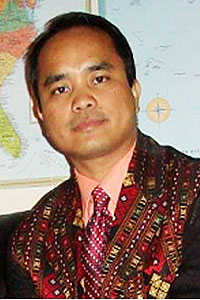The question of federalism is an important historical issue which unified and divided the country since before the country's independence in 1948. The idea of forming a Union government that would give equal status to all citizens brought together different ethnic groups at the Panglong conference in February 1947.
The same issue divided the country psychologically and emotionally when the Anti-Fascist People's Freedom League (AFPFL), the first elected government after independence, failed to fulfill the political aspirations of the country's non-Burmese ethnic nationalities.
When the non-Burmese ethnic groups (the frontier people) pushed for autonomy or federalism, coupled by the weak civilian government at the centre, the military leadership under General Ne Win staged a coup d'état in March 1962.
The military hierarchy was anathema to federalism though it was incorporated in the 1947 constitution.
Successive military governments had construed the use of the word "federalism" as anti-national, anti-unity and pro-disintegration.
Until as recently as 2011 when the State Peace and Development Council military government allowed the Union Solidarity and Development Party government led by President Thein Sein, who himself was a military general, to form a quasi-civilian government, one could land in jail for advocating federalism.
With a gradual democratisation process, the Thein Sein government accepted the concept of federalism. And this has been one of the core principles of the ongoing peace process with the country's ethnic armed groups.
As a pro-democratic party, the National League for Democracy (NLD) has been supportive of a federal government. But nobody really knows what type of federalism Myanmar would eventually have, not even the ethnic minorities that have championed the cause for the past several decades.
During my visit to Myanmar in 2014, I asked the former prime minister General Khin Nyunt, who introduced the seven-step road map toward a "flourishing and disciplined democracy", as to what type of federalism Myanmar should adopt. His response was that the country needs a federal democracy that best suits the country.
What type of federalism would best suit the country and its people? Is the American type of federalism or the quasi-federalism practiced in India? The 2008 constitution neither follows America nor India, the two biggest democracies of the world.
For example, in American federal system, the citizens cast ballots for a slate of members of the electoral college which then elects the president. And the president serves as the chief executive and commander-in-chief of the armed forces.
Similarly, the Indian president is elected indirectly by the people and is a nominal head of the country and the commander-in-chief of the armed forces. However, the day-to-day administration is under the leadership of the prime minister.
In Myanmar, the president is indirectly elected by the people through members of parliament but he is not the commander-in-chief of the armed forces. Since there is no role for prime minister, the president oversees the day-to-day administration.
One fundamental principle of federalism envisioned by ethnic minorities is that there should be equal status for all ethnic groups. Their argument is that despite their numerical majority, the Burmese group should be treated as one ethnic group like any other ethnic group in the country.
However, the irony is that there is no one particular Burmese state, region or zone. The seven states are named after different ethnic groups while the seven regions are by default considered as the territory of the Burmese people, despite the presence of multi-ethnic groups.
Given the sizeable majority, as well as their control over the government and the military institution, it would be very hard for the Burmese to accept the notion of equal status and equal opportunities in line with ethnic minorities.
Another major problem of building a genuine federal system is the dominance of the military.
The military not only has 25% reserved seats in all legislatures, but also appoints one vice-president and holds the three most important ministries -- home, defence and border affairs.
The military also heads the National Defence and Security Council, which has the authority to declare a national emergency for the military to take charge of all branches of the government -- executive, judiciary and legislative.
One other basic universal element of federalism is that individual states should have power over their legislative affairs as well as electing their own governors or chief ministers. In the present system in Myanmar, states are deprived of these fundamental rights.
As the NLD begins to form a new government, it should explore all possible means to bring change in the system itself, starting with amending or replacing the undemocratic or the unfederalistic constitution.
One such possible route would be through the peace process with ethnic armed groups, outside of the parliament. Another option, though the chance is very slim, is to gradually convince the military to reduce its role in politics through the legislative process.
Despite the challenges and difficulties ahead, the type of federalism Myanmar needs to build is a system that guarantees equality of rights to all ethnic groups and decentralises or delegates power to state and local governments.
The military and its institution must be accountable to a democratically elected civilian government.
Nehginpao Kipgen, PhD, is an Assistant Professor at the School of International Affairs, O.P. Jindal Global University. He is the author of three books on Myanmar, including the forthcoming Myanmar: A Political History by Oxford University Press.
